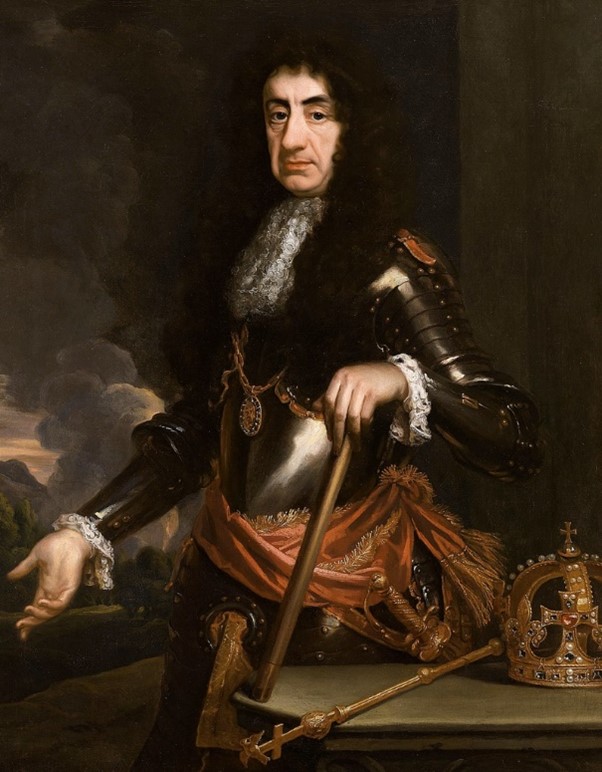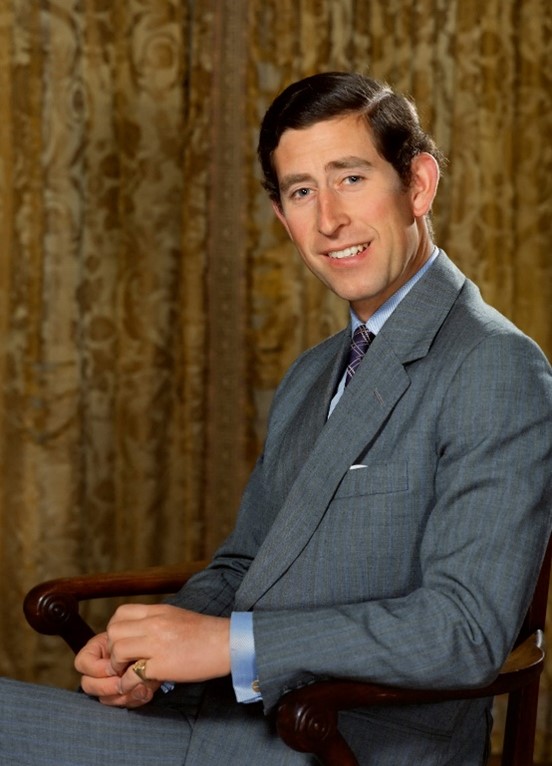Merry Monarchs: Charles II and Charles III
Published 12 September 2022, Mark Knights
Do Charles II (1630-1685) and Charles III (1948-present) have anything in common? Over three hundred years apart, there are, of course, many differences; but are there any parallels between the two monarchs and the two ‘Carolingian’ periods?
Both Charles II and Charles III came to the throne after a long wait. Charles II, whose father Charles I lost the civil wars and was beheaded in 1649, endured a long period of exile, in which he toured the courts of Europe looking for both refuge and support in his bid to regain his kingdom. Although the monarchy was restored in 1660 and Charles came to the throne, the somewhat traumatic experience of his ‘travels’ lived with him for the rest of his life. During his exile, Charles had to swallow distasteful policies foisted on him by his temporary allies, leading to a life-long tendency to disguise his true self. Charles III has waited longer, of course, and though his apprenticeship was less traumatic it may well have as enduring an impact on how he behaves as monarch and he may have to emulate his name-sake by hiding his opinions and his true self. Charles II was a ‘monarch in masquerade’; Charles III may well have to be one too.
Charles II and Charles III share a tolerant attitude to religious faith. Perhaps as a result of his exile, when he had courted both Presbyterian Scots and Catholic princes for support, or perhaps because his country had been split apart by a religious civil war, or perhaps out of a personal indifference to religious dogma, Charles II wished to adopt a tolerant religious settlement of his kingdom. Charles III has a similar antipathy to religious formulas and an expansive attitude to other faiths. He has publicly declared a willingness to become ‘Defender of Faith’ rather than ‘Defender of the Faith’, the formula coined for Henry VIII – ironically initially to defend Catholicism and then the newly Protestant Church of England.
Charles II had to re-invent monarchy after it had been abolished for eleven years. In re-asserting his constitutional role, the new king aroused opposition from those who clung to republican ways or who thought that the king’s rule was becoming increasingly ‘arbitrary’. Charles III may well feel a need to re-invent the role of the monarch and his readiness to restrain his opinions from ‘meddling’ in political affairs may well be constitutionally testing. And the constitution in relation to Scotland is another common factor. During the republic era, Scotland (and Ireland) had been (forcibly) united with England and Wales and given representation at Westminster; the restoration of the monarchy in 1660 pulled that formal union apart and in 1679 restless Scots rebelled against the Anglophile regime north of the border. With devolution strained, Scottish restlessness again seems likely to challenge the relationship with England.
Charles II was intellectually curious, like his modern counterpart. The seventeenth century king had a laboratory for experiments and interacted with key artists and intellectuals: John Dryden, whose poem Annus Mirabilis commemorated the disaster yeas of fire and plague; the diarist and virtuoso John Evelyn; and Christopher Wren, who rebuilt London after the Fire of London and whose St Paul’s Cathedral is still a focal point of state ceremony. Charles III is also intellectually curious and keen to meet with key players, such as Greta Thunberg, as well as heads of state. He is well versed in environmentalism and many other projects.
And both monarchs had mistresses. Charles II was a notorious womaniser, with a long list of lovers and illegitimate children; but he did eventually settle down with one, the Frenchwoman Louise de Kerouaille, who he created Duchess of Portsmouth. Even whilst his wife (the Portuguese Katherine of Braganza) lived, Charles installed Portsmouth in a lavish apartment in Whitehall and she became increasingly seen as an alternative, controversial consort. Our own new king has something of a similar story, though the relationship with the new Queen is now formalised in a way that Charles II was unable – and probably unwilling – to do.
Charles II’s sexuality and lifestyle also made him an object of great public fascination. The diary of Samuel Pepys testifies to this; and the king’s mistresses, such as the actress Nell Gwyn, became the first public celebrities, famous for being famous. Charles’s courtiers, with their libertine and scandalous lives, also attracted a good deal of attention. Celebrity was arguably invented in the restoration era. Today the monarch continues to fascinate not only Britons but many others round the world. Celebrity has gone global.
The Carolingian era was one of great change. Charles II’s reign witnessed the birth of the two-party system, when Whigs and Tories emerged in the early 1680s. Religious and political dissenters were hounded. The scientific revolution flourished, symbolised by the creation of the Royal Society (the king was its first patron) which still exists to promote science. Print media became extensive: although the king was able to re-assert control over the press, he again lost this between 1679 and 1681, a period of crisis that saw a huge outpouring of public discourse. War and financial disaster loomed large: in 1672 the King had to declare bankruptcy after he was unable to service debts. And an expanding empire was resourced in the Caribbean by African slaves (the king’s brother headed the Royal African Company which supplied them). It was a period of intellectual contest and ferment that produced both reactionary ideologies and the revolutionary liberalism of John Locke whose ideas about popular sovereignty and the limited nature of the monarch’s powers helped to push Britain away from absolutism.
The era of Charles III also looks set to be one of great change and challenge. We are in the midst of another communications and scientific revolution; we face war and economic challenge; we are as divided as if we had just experienced a civil war; and we struggle to find our place in the world. The Carolingians at the end of the seventeenth century ended up with a second, after a disastrous three year reign by Charles II’s brother James. What do we have in store?


Copyright: National Portrait Gallery, London
